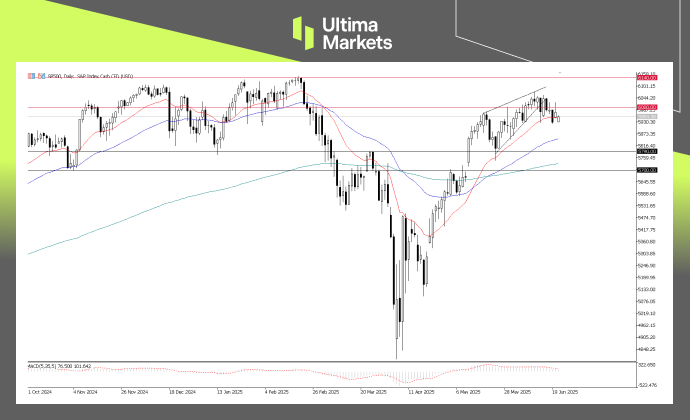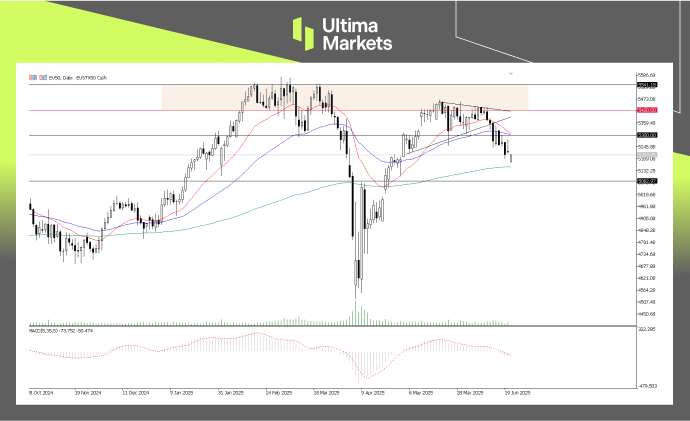Global Equities Slide as Geopolitical Tensions Escalate
Global equities declined at Monday’s open as investors reassessed risk sentiment amid escalating tensions in the Middle East. The drop followed news of U.S. and Israeli airstrikes on Iranian nuclear facilities, sparking fears of retaliation and broader regional instability.
Market Overview
Asian markets fell sharply, while U.S. and European equity futures also traded lower in early hours. Risk-off sentiment prevailed as traders moved to hedge against potential geopolitical fallout.
Oil prices continued their upward momentum, surging to five-month highs on fears of supply disruptions. Brent crude rose to $79 per barrel, while, WTI crude climbed to $78.50 per barrel.
These gains were driven by market concerns over the potential closure of the Strait of Hormuz, a crucial global oil transit route.
Middle East Tensions Escalate Following Airstrikes
Geopolitical risks spiked after the U.S. and Israeli forces launched coordinated airstrikes on Iran’s nuclear infrastructure.
Key Developments:
- The strikes, carried out on June 21, targeted facilities in Natanz, Fordow, and Isfahan using bunker-buster bombs and cruise missiles. The U.S. described the attacks as having “obliterated” key components of Iran’s nuclear program.
- Israel reportedly continues the operation, focusing on Iranian missile and nuclear infrastructure.
In response, Iran launched a retaliatory barrage of missiles and drones at Israel, with confirmed strikes on Be’er Sheva, including a hospital and civilian areas. Also, Iran threatened to shut the Strait of Hormuz and called for international condemnation, accusing the West of aggression.
Over the international response, Russia and China called for an immediate ceasefire and diplomatic dialogue, while the U.N. Security Council convened an emergency session, urging de-escalation. Meanwhile, U.S. President Trump praised the strikes and hinted at the possibility of regime change in Iran.
Global Equities Slides on Uneased Sentiment
Global stock markets opened lower on Monday as unease over geopolitical risks weighed on investor sentiment. This weakness is notable given that many major global indices are trading near all-time highs.
SP500: Facing Challenge at 6000-mark
In the U.S., the S&P 500 Index edged slightly lower at the open, struggling to regain ground above the key 6,000-mark—a level it has been consolidating around for some time.

SP500, 4-H Chart Analysis | Source: Ultima Market MT5
From a technical perspective, the recent price action suggests a loss of bullish momentum. With sentiment already fragile, any significant shift—especially from geopolitical developments or surprise economic data—could quickly accelerate downside pressure.
EU50: Bearish Breakout Signals Further Downside Risk
In Europe, the EuroStoxx 50 (EU50) staged a bearish breakout, breaching the lower boundary of a recent triangle pattern and falling below the key 5,300 support level.

EU50, Day-Chart Analysis | Source: Ultima Market MT5
With sentiment remaining fragile amid rising geopolitical and economic uncertainty, the technical breakdown suggests that EU50 faces increased risk of further downside in the near term.
Disclaimer
Comments, news, research, analysis, price, and all information contained in the article only serve as general information for readers and do not suggest any advice. Ultima Markets has taken reasonable measures to provide up-to-date information, but cannot guarantee accuracy, and may modify without notice. Ultima Markets will not be responsible for any loss incurred due to the application of the information provided.
Why Trade Metals & Commodities with Ultima Markets?
Ultima Markets provides the foremost competitive cost and exchange environment for prevalent commodities worldwide.
Start TradingMonitoring the market on the go
Markets are susceptible to changes in supply and demand
Attractive to investors only interested in price speculation
Deep and diverse liquidity with no hidden fees
No dealing desk and no requotes
Fast execution via Equinix NY4 server









